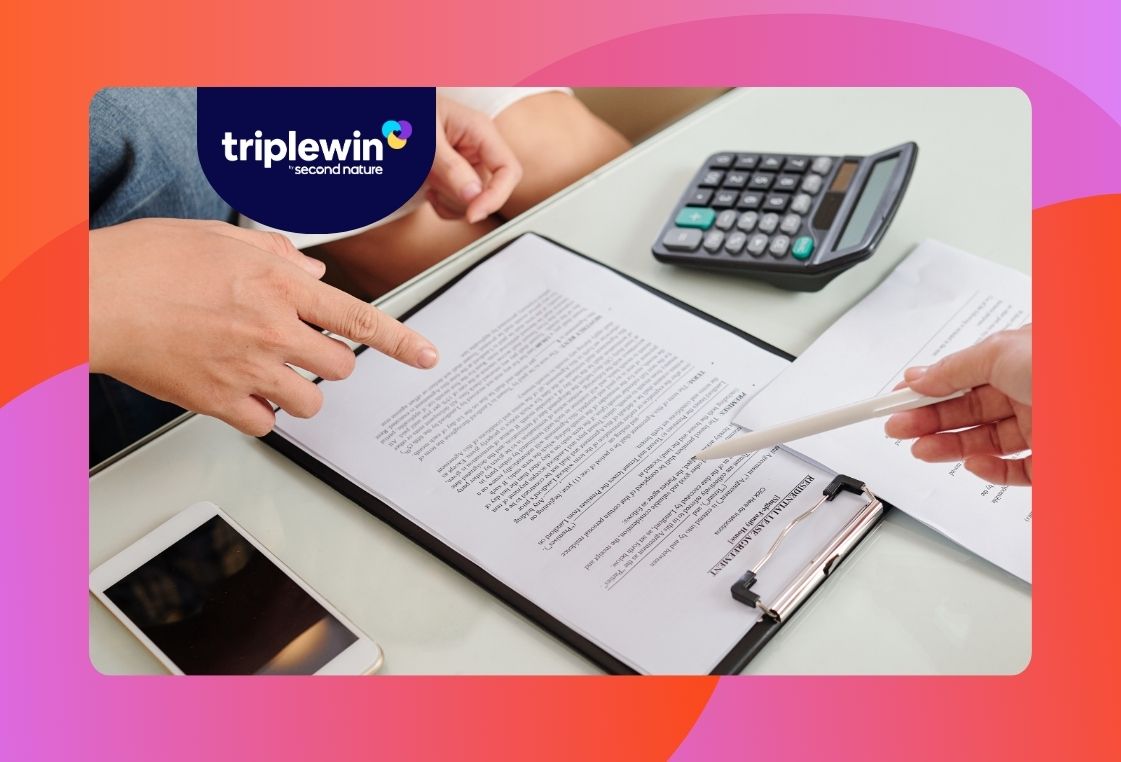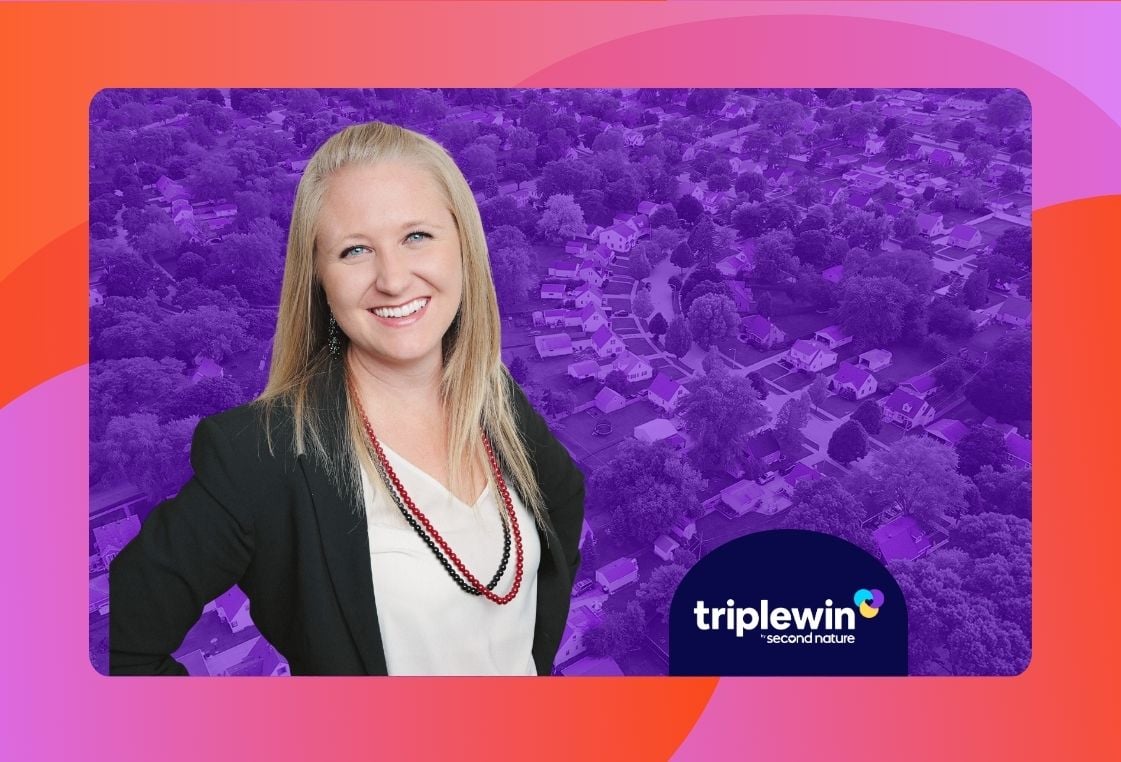What if we told you it's possible to craft a lease renewal letter that makes everyone happy – even when you raise the rent?
That’s right! It’s absolutely possible, and it’s all about positioning. How do you choose pricing? How do you then position and present your lease renewal offer? How do you do this in a way that promotes clarity, builds trust, and drives the business results you’re after?
That’s what we’re covering in today’s topic: Crafting a lease renewal letter. We’ll dig into what it is, what you should include, and why an effective letter is so important for all stakeholders. We’ll also provide an example and a template you can use yourself.
What is a lease renewal letter?
A lease renewal letter is a document sent by a landlord or a property manager to notify residents that their lease is nearing its end, and to present the terms of a new lease or simply give the option to renew. It should be sent to tenants at least 60-90 days before the lease’s expiration date to give them advance notice of changes and enough time to make their own decisions.
Your lease renewal notice should give residents a clear understanding of the timeline and their options and ideally make it easy for them to renew their lease – if that’s what you and the investor want.
If you don’t want to renew or are pursuing an eviction, you will follow a different process.
What does a lease renewal letter include?
At its most basic, a lease renewal letter is just a statement of the ending of an old lease and the beginning of a new one. But a really successful letter should do more than that.
The goal of a lease renewal letter should be to present any changes in a way that makes it clear to the resident why those changes are happening, and how it can be a benefit to all parties. It should smooth out the transition and position the renewal in a way that – as we said above – promotes clarity, builds trust, and drives the business results you’re after.
Are you raising rent this year? (You probably should be increasing rent each year, according to the market.) How can you position this change in a way that satisfies your investors and your residents? One example is to include a clear comparison of the cost of moving vs. renewing.
Another great way to position those changes is to outline resident benefits that are included in the lease. A resident benefits package can drive unique value for residents to renew.
These are all important considerations in framing the letter. With that in mind, here are the practical components of a lease renewal letter:
Personalization
Like any formal document, you should include your name and address, and the resident’s full name and the property address at the top. Also, put the date the letter is being sent.
This is important for your records, but also to demonstrate respect and professionalism in the document.
Lease expiration date
Start with a clear statement that their current lease is coming to a close and include the exact expiration date of their current lease.
New lease terms
Outline the new lease agreement and terms of the lease, including the duration of the renewed lease. The resident should be able to read the letter and understand exactly what is changing from the original lease. Your goal is to help them make an informed decision based on those changes.
Description of the benefits included with the lease
If you’re offering something like a Resident Benefits Package, the lease renewal letter is a great opportunity to remind residents of those benefits. Concisely and clearly outlining the value they get from the RBP is a great way to position yourself for success in the next year.
The lease renewal letter is also an excellent opportunity to introduce a resident benefits package if it’s new to your residents. Outline the valuable benefits and how it will drive better quality of life, improve financial stability, and even cut long-term costs for your residents.
Rent increase (if applicable)
Another part of the new lease terms might be a rent increase. The amount of a rental increase should be based on the market in your area. In this section, it’s extra important to add context for the resident. Include the estimated cost of moving, the market trends, and other factors that go into the rent increase.
Help them understand that you’re not fleecing them! Give enough clear context to explain that the increase ensures that you and the investor can afford to continue to offer the high-quality home and benefits they’ve become accustomed to.
A Note about Rent Increases: This is a tricky subject for a lot of property managers.
For self-managing landlords, sometimes the topic of increasing rent can feel daunting. After all, what if the resident doesn’t like the increase and decides to move? That’s a lot of cost and effort for turnaround if you just have one rental property to manage and it’s not your full-time job.
The problem, though, is that if you’re not incrementally increasing rent, one day, you’ll discover a big gap between your rental price and the market price. Then you’re faced with an even messier situation of bumping up the price by a lot.
Even among professional property managers, this question can get tricky. Some people just raise the rent by an arbitrary amount. However, the ideal approach is to evaluate the market in your area and ensure that your properties are in line with that pricing.
Why is a lease renewal letter important for tenants and landlords?
Remember, we’re aiming to provide clarity, build trust, and drive business results. A letter at the outset of a new lease can do all three of these things.
For tenants in a property, a lease renewal letter helps set out all the factors they need to consider when making a decision for their coming year. It helps reduce disruptions in their living situation and sets them up for success and satisfaction in their next lease term.
For the real estate investor, a renewal letter is critical to achieving any necessary new agreements, rent increases, etc. A well-composed letter will help reduce turnover (and thus turnover costs) and increase satisfaction.
And, for a property management company, a lease renewal letter gets everyone on the same page, ensures consistent rental income, and can position a new lease as a triple win for residents, investors, and property managers.
Lease renewal letter template and how to customize it
Here's how to customize the template for your own use:
Date and contact information
Since this is a legal document, include the date and your contact information at the top. Below that, include the current tenant’s name and the address of the property in question.
Make sure to personalize the salutation as well, such as: “Dear [Tenant First Name] [Tenant Last Name].”
Friendly introduction and framing
Write a friendly greeting that establishes the value they provide to you. This, of course, can be tweaked for different residents, depending on your experience with them. But an example is that you can thank them for being wonderful tenants and explain that this letter is to make the renewal process as easy and frictionless as possible for them. Then, to frame what's coming, explain that your company aims to make their resident experience the best it can be and list a few of the updates you're making to services or benefits, or simply review what you've been offering.
Key details about lease expiration
Clearly outline the end of their current lease term with the lease end date. You can include reminders on what was included with that existing lease and explain that you are happy to renew with them for another year (or whatever lease term you want).
Terms and conditions of the new lease
Next, clearly outline the terms and conditions of the new lease. What is the duration of the lease? Has anything changed in what the residents are agreeing to?
This is where you’ll also include any rent increases. You can customize this for your area, but it’s good to address resident expectations here. Give context on the cost of a move and the changing cost of property/maintenance/rentals/etc. in your market, and how that affects the changes in rent amount.
Next steps for the resident
Explain what you need next from the resident. Typically, all you need is for them to sign the letter and return it to you. Let them know how they can reach you with questions or requests.
Signature
Sign off with a friendly goodbye and include your signature along with your printed name and the date again.
Next steps after sending a lease renewal letter
Okay, so you’ve sent your brilliantly crafted, perfectly positioned lease renewal letter. What’s next?
Well, the resident may simply sign on the dotted line and send it back. Or they may have questions, requests, or negotiations. The third option is they may let you know they don’t intend to renew. Here’s how to deal with those scenarios.
Consider tenant requests
It’s completely reasonable to expect that some residents will have questions about the letter or may even contact you with requests to make changes to the new lease terms.
Property managers should be prepared to field those requests, be open-minded to reasonable ones, but also be ready to explain if a request can’t be accommodated. Showing some flexibility is a great way to get resident buy-in, but ultimately the decision isn’t always up to you.
Be ready again with context and positioning to explain the changes in a positive way. You made the changes to benefit everyone, so make that clear when communicating with residents.
What to do if a tenant declines
You have different options if a tenant declines to agree to the new terms. You could change the tenant’s lease terms, transition to month-to-month, etc. Or, you can proceed with a non-renewal and prepare the property for listing and getting a new resident.
This should trigger your team’s move-out processes. Request a written notice of the resident’s intent, establish a move-out date and move-out instructions, including what will happen with the security deposit. Then, your team will want to begin the process of marketing for a new tenant.
Legal considerations
Lease renewals must comply with state and local laws, avoid discrimination, and be clear about the rights and responsibilities of both parties. If you are terminating a lease in a state that requires a “just cause,” you need to provide a legitimate reason for not renewing the lease.
The key is to know the requirements in your jurisdiction. It’s also a good idea to have a lawyer review your lease renewal template before you make it standard across your properties.
Final thoughts
When it comes time to renew a lease, you have a unique opportunity for positioning with your residents. A lease renewal letter is your chance to reconnect on terms, update expectations, increase rent if needed, and more. And the way you compose that letter – and the way you position the changes – can make all the difference in your renewal rate and resident satisfaction.
It’s also the perfect opportunity to introduce a Resident Benefits Package and remind residents how your role is to add value to their living situation.
Use our guide above to ensure your lease renewal notice is clear, helps build trust, and helps drive business outcomes for you and your investor clients.




